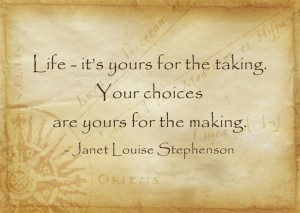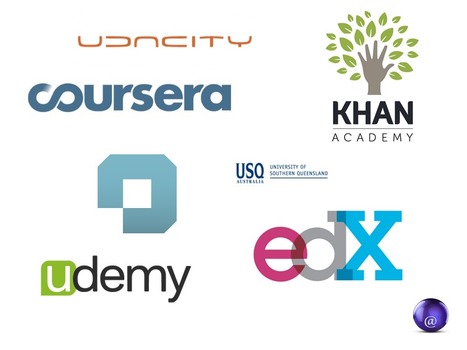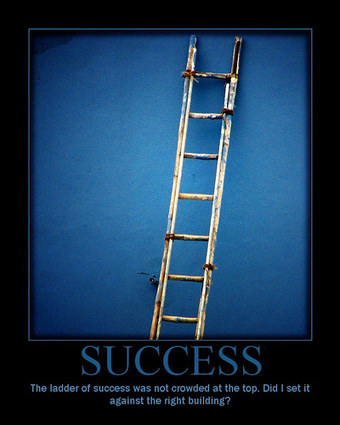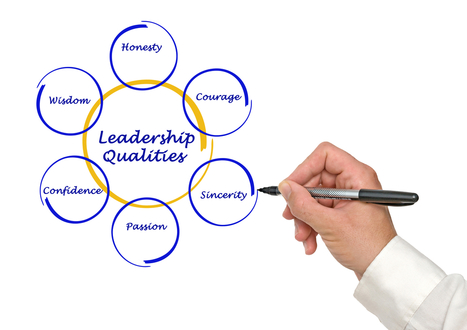When you start to brand your own name or your business, there are some first steps to take. Social media accounts. Websites. A logo. Maybe even some business cards. If you are job seeking, you want to build your resume based on the image that you want to portray as an individual and expert in your chosen field.
Once you have the basics of branding down, you may reach a plateau of sorts. It takes a lot of work to build on the reputation you have put in place. Never stop looking for new ways to make a bigger, better name for yourself or your business, however.
Get Started for FREE
Sign up with Facebook Sign up with X
I don't have a Facebook or a X account

| Tags |
|---|

 Your new post is loading... Your new post is loading...
 Your new post is loading... Your new post is loading...
Have you ever noticed how a pat on the back makes you feel great for days? Have you ever noticed how a pat on the back makes you feel great for days? If the praise comes in handwritten or email form, maybe you frame the note and put it on your wall so it can lift you up on a tough day or help you feel more engaged at work. (Years of studies by Gallup and other research groups have shown that engaged employees are much more productive.)Sadly, kudos from bosses are all too rare. Believe me, I know. Back in 1976, I was a 25-year old MBA when I took my first job as a marketing assistant at General Mills in Minneapolis. I had never held a job beyond teaching tennis and managing a tennis camp, and my starting salary was a whopping $10,500 a year. My co-workers tried to help me along, but the culture demanded crisp critical thinking skills that I had yet to fully develop. It seemed as if there was something wrong with everything I did. At my six-month performance review my boss said, "Doug, I like your determination, but to be honest, your performance has been very mediocre." And his boss's comment? "Doug should look for another job."....
Your experiences on your resume got you the job. Your accomplishments got you promoted. And your credentials have earned you oodles of respect. Or did they?
Digital technologies and collaborative consumption have already disrupted many different industries. Will disruption hit airport car rentals?
Previously, we addressed how to create a powerful future vision.Previously, we addressed how to create a powerful future vision. Equally important is how that vision gets communicated to your people. This is where the art and skill of storytelling becomes very important. Done well, storytelling can be a powerful catalyst for driving transformational change. Effective leaders tell stories that position them and their organizations as change agents instead of defenders of the status quo. People have been telling stories for millions of years so there is nothing new here, right?
How to understand how get cultures unstuck and how to get unstuck! In my recent “Hijack” blog we explored how an individual gets triggered and how your brain blocks performance. Now let’s look at how entire cultures get triggered—and how to recover plus prevent this scenario. First, a word on culture. Over time a company evolves cultural norms—beliefs about how the world works and what is “normal.” The composite of these norms creates an identity. So if someone yelling or disrespecting another, gossiping, and public beheadings are considered “normal,” then you may be dealing with a Critter State, fear-driven company culture. If healthy conflict, respectful disagreement, and productive feedback are normal, you are well on your way to a SmartTribe culture. If you are thinking, Uh-oh, there’s way too much fear in my culture, let me give you a few quick tips on how to turn that around in the moment. The first method is to teach yourself and your team a hand signal that serves the dual purpose of explaining the Critter State hijack phenomenon and also lets you signal to one another when it’s happening. We’re going to use your hand to represent your brain in this technique learned from the brilliant Dr. Daniel J. Siegel.[1] Why Resisting Change Isn't A Bad Thing: The Social Change Adoption Path Christine Comaford Contributor
The 3 Reasons Great Companies Stop Growing--And The Solution Christine Comaford Contributor The #1 CEO Mistake That Will Kill Your Company Christine Comaford Contributor How To See Into Your Biggest Blind Spot Christine Comaford Contributor Hold one of your hands up, palm out, and cross your thumb over it. Like this:
The base of your palm represents your brain stem, or your reptilian brain. Your palm represents your mammalian brain, with your thumb representing your limbic system. Now fold your fingers over your thumb and make a fist.
The back of your hand and fingers represent your neocortex, with your knuckles to fingertips representing your prefrontal cortex. Your closed fist represents full access to all parts of your brain, from your prefrontal cortex through your reptilian brain. This is your Smart State–where you have great choice, you’re creative, present, emotionally engaged, and ready to roll. Now think of the last time you “flipped your lid”—you had a tough day, you got triggered, and you dove into your critter brain and were in fight/flight/freeze. This is where you were: Image Credit: Christine Comaford Associates, 2012 Your Smart State was hijacked and your Critter State was running the show. In this case your undesired (by your conscious decision making) safety patterns were in charge and you didn’t have access to resourceful states. Your frontal lobes were flapping in the breeze, using their time- and pattern-matching capabilities to trigger Critter State activity and access to “negative” states like anxiety. (We don’t really like to judge these states as positive or negative, because every state has a use in some context, but these states are undesirable when you don’t have access to the resources you need to solve a problem or move forward.) Now once again close your fingers over your thumb—like the victory punch people throw in the air when they are successful. Like this: Image Credit: Christine Comaford Associates, 2012 As I mentioned above, this is going to symbolize full access to the resources in your frontal lobes through your reptilian brain. Remember, access to the frontal lobes’ resources allows you to plan, innovate, solve complex problems, think abstract thoughts, have visionary ideas, experience higher consciousness, all with full positive emotional range—in short, to be in your Smart State. You may want to teach these hand signals to your team, as they are super helpful to use at work. When I am really stressed out, I’ll show the “flip your lid” signal above. When I’m in a meeting and want everyone to be in their “creative zone,” I’ll show the closed hand symbol. The table below is a quick reference guide for some behaviors that send us into our Critter State versus our Smart State—do note that all of the Smart State behaviors are taught in my upcoming book, SmartTribe (download an excerpt here). Behaviors That Send Us into Our Critter State and Smart State: What sends us into our Critter State What sends us into our Smart State Layoffs/reorganizations without explanation Clear messaging on what this layoff or reorganization means and how it is for the health of the company and team Note that some roles with either high routine or high stress—such as those in data entry, assembly lines, and call centers—are more apt to see workers slide into their Critter State. This is where cultural rituals around recognition as well as a highly emotional mission, vision, and set of values help tremendously. I hope that by now I’ve convinced you that the Smart State is better for business—especially a business where innovation and change are necessary for growth. It’s also the optimal state to lead people from, to sell from, to grow from, to live from. How do you get in and stay in your Smart State? Christine Comaford is a global leader in human performance optimization. She coaches leaders to achieve remarkable results in performance and operational efficiency by combining neuroscience and business strategy. Follow her on Twitter (@comaford) and download an excerpt of her upcoming book SmartTribe: Creating a Culture That Outperforms, Outsells, Outinnovates the Competition at www.SmartTribeBook.com.

Rui Jia's curator insight,
May 1, 2013 11:32 PM
culture is an important part in an oganisation, it is effective to convince people to accept your brand and let them to identify your company from other competitors. it is more like a brand personality, culture will make people know who you are and what do you do with out any explanition. 
Anny Ma's comment,
May 9, 2013 2:02 AM
Culture is important in the oganisation and different cultures help different people to accept the same good.

Paula Hudson's comment,
May 12, 2013 11:46 PM
culture is important for the organisation and the consumers to have a good view of your brand - would be a good article for brand identity not so much communication mix
Collaboration taps in to a broader pool of ideas. It maximizes the talents and abilities of your people. An inclusive culture is more flexible and adaptable. People are highly motivated, work harder and are more creative. However, collaboration isn’t something you can put on. For it to work you have to believe in it. You can’t order it. Collaboration begins at the top. If leaders model it, others will too. Collaboration isn’t technique. It’s culture. If a leader believes that everything rises and falls on their talent and ability, and resources are for their sole use, collaboration is DOA. Moreover, it severely limits the organization. Ron Ricci and Carl Wiese report in The Collaboration Imperative, that there are four leadership traits of highly collaborative leaders:
They focus on authentic leadership and eschew passive aggressiveness. Leaders do what they say they will do and don’t take disagreements personally.They relentlessly pursue transparent decision making. “There’s a direct relationship between the agility and resilience of a team and the transparency of its decision-making process. When you’re open and transparent about the answers to three questions — who made the decision, who is accountable for the outcomes of the decision, and is that accountability real — people in organizations spend far less time questioning how or why a decision was made.” Being mysterious about decisions doesn’t make a leader more powerful. It is an illusion.They view resources as instruments of action, not as possessions. Collaboration is attainable only if you are willing to share resources as well. “The more transparent the environment, the more willing leaders will be to share resources in support of the shared goals of the entire business, and the harder it will be for resisters to hoard them.”They codify the relationship between decision rights, accountability and rewards. When collaborative behaviors are “codified into an end-to-end system across your organization, the greater the odds of collaboration succeeding when you’re not there to reinforce cultural norms. As you define the decision paths of your organization and build a common vocabulary to make those decision paths as transparent as possible, take the time to establish clear parameters. Who gets to make decisions? Are all decisions tied to funding? These are the types of questions to which everyone must know the answers.”
The Big 4 energy blocks: Limiting beliefs, Assumptions, Interpretations and Fear (called as well Inner Critic, Gremlin, Saboteur) keep you stuck and prevent you from achieving what you want to in your life. Via Belinda MJ.B, David Hain
I remember with crystal clear clarity (not to mention joy and gratitude) the year I quit guilt. I gave it up cold turkey. And my life changed drastically. Years of beating myself up for my shortcomings, mistakes, and failures were erased in the moment I fully understood just how useless guilt is.
To understand where your guilt comes from, you must first revisit your personal values and core beliefs. You may be holding on to outdated programs that no longer serve you as an adult. You may be giving your power away to a belief system that no longer applies to your life. You need to identify who and what defined the moral standards you believe apply to you, as well as what constitutes a violation. Via Janet Louise Stephenson, David Hain
Money is not the best motivator....While people expect fair pay for their services, we all know that money isn't king. Nevertheless, when it comes to business we all too often act as if it were. We think purely in terms of salaries, bonuses, and people's positions on the org chart. While we pay lip-service to the idea that people may have non-financial motivation for their work — acknowledgement, appreciation, pride in accomplishment, enjoyment and so forth — we spend all our time working out how to incentivize our workforce with financial rewards.......
Everyone has within them the desire and the means to make life a masterpiece, it maybe hidden in the recesses of their soul or buried amongst the pain of living an existence but it is there waiting to be discovered. The challenge for a lot of people is that they prefer security over the unknown and would rather be bored to death turning up each day to a job they hate and working with people they quite often dislike. The sad truth is that most people go to their grave without their song ever being sung.The reality is that you can create a life you dream and love if you have the courage to make some key decisions and take some initial steps on that journey..... Read more at http://www.jeffbullas.com/2010/11/22/10-secrets-to-being-insanely-successful/#vkgGfimQgKyEmke1.99
Welcome to the second full week of our special blog series, “Winning through Engagement.” We start the week with the conclusion to Josh Allan Dykstra’s post on making work environ... |
Este talento es vital para lograr sus metas. Adquiera nuevas habilidades e impulse su proyección dentro y fuera de su empresa.
By far the greatest obstacle to success that I see in others is a poor understanding of people.
#1 Don’t Say -“I pay your salary. You have to do what I say”. This statement is dictatorial. Threats and power plays are not the way to inspire loyalty or great performance from the individual workers. Great executives lead by inspiring, teaching, encouraging, and even serving their employees. Good leaders do not need to threaten. Via AlGonzalezinfo, David Hain
Many business leaders think they’d rather have great execution than superior strategies, but you can’t have the first without the second.I once heard a business leader say, “Strategy is results.” He meant that strategy doesn’t matter as long as you are producing results. Many other business leaders feel the same way. Often, this is because they associate strategy with analysis and execution with getting things done, and they attribute more value to doing than to analyzing. From that perspective, a strategy is a lofty, self-evident statement such as “Our strategy is to maximize customer value” or “Our strategy is to become the market leader.” Such “strategies” don’t contribute much to producing results. Possibly, they motivate the troops, although even that is highly debatable.
From
om
Been on LinkedInfor a while but haven’t done very much with your profile? You really should be leveraging the benefits of your profile now—whether you’re in a job search or not. You shouldn’t wait to complete your profile on LinkedIn until you’re in a job search because when you finally do need it—it may be too late.3 Reasons To Complete Your LinkedIn Profile
Recently I was working with some people and dividing up action items and tasks (or otherwise known as work). Then in the back of my mind I remembered the 3 things I learned to give you a good chance at satisfaction with the work you you do.For any work or task to be satisfying it needs to have three qualities: Autonomy - Are you able to independently complete the work without constant checking with authority figures, partners or other entities?Complexity - Does the work stretch your mental muscle and keep you mentally engaged?Connection between effort and reward – the effort you expend to complete the work does it provide you with equal reward. There is times where just having the first two items, autonomy and complexity is enough to make the effort and reward payoff.......
source credit: geniusbeauty.com
Something that happens in the workplace is that people tend to take on leadership skills of the boss. Six leadership styles you don't want to emulate. Via Morag Barrett, David Hain
Are you ready to reveal the REAL you? (Why settle for a ripple when you can make a wave? Via Glen Bacarro, David Hain
Why should true leaders display Vulnerability, Courage, Gratitude and Authenticity? Via Happy_Laurence, David Hain
We live in one of the most exciting times in the world's history where you can build a personal brand faster and broader than anyone has even imagined.
We’re digging this post! CEO and author Ed Muzio gives us some great insights and immediate applicability to our work. Doesn’t matter if you’re a manager or an individual contribu...
"They stumble through their management careers under the misconception that if the employees aren’t happy, it’s the employees’ problem."
Connect with Ed Ed Muzio is CEO of Group Harmonics (http://www.groupharmonics.com/) and author of the award winning books Make Work Great and Four Secrets to Liking Your Work. Best known for his whiteboard videos, Ed is a leader in the application of analytical models to enhance group effectiveness. Featured in international media including Fox, CBS, BNET, and The New York Post, Ed serves as an advisor and educator to workers at all levels in companies worldwide.
|































